Highlights
Meet a CQTian: Nguyen Hoang Long
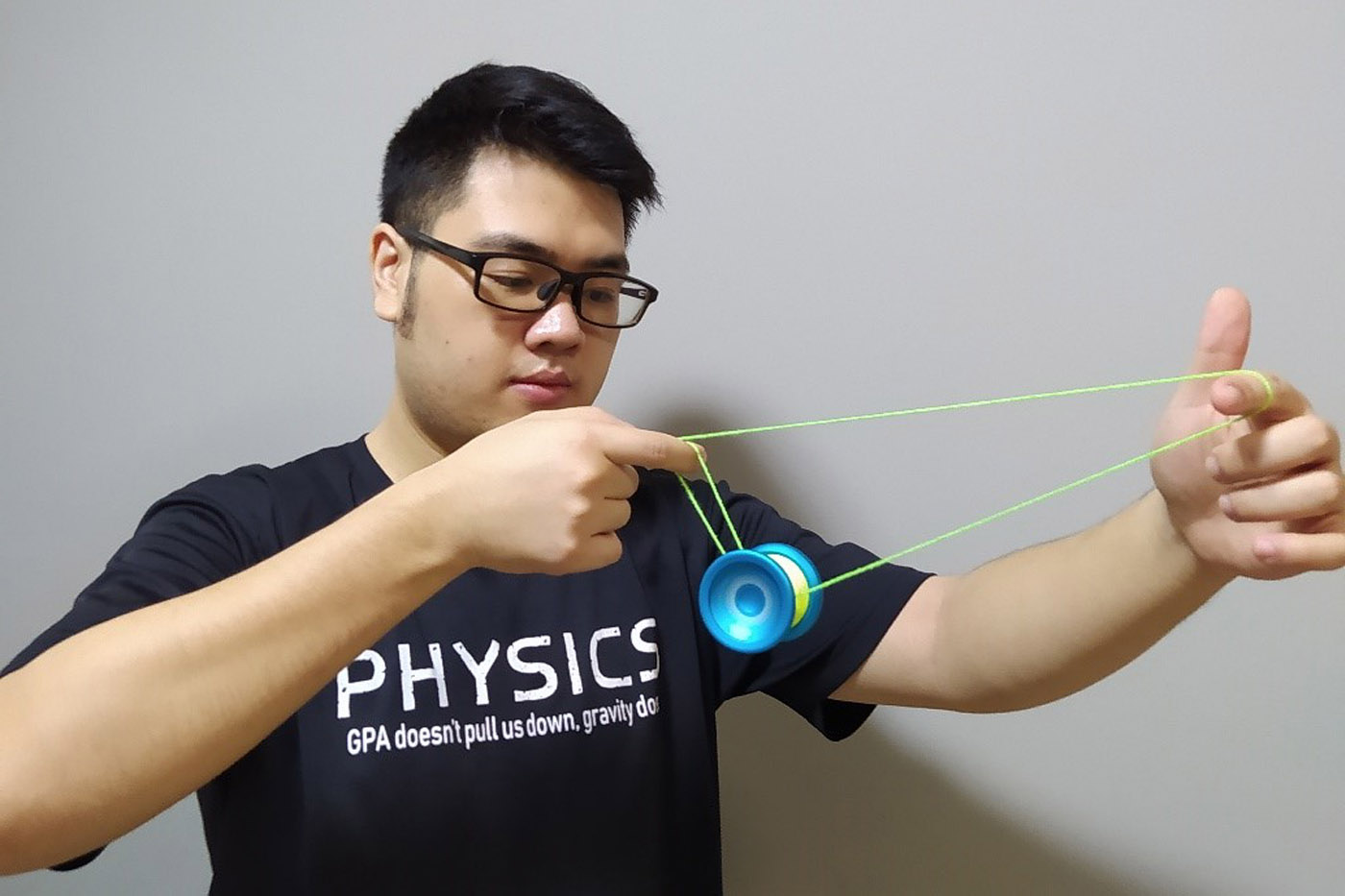 Long enjoys playing the yoyo outside of work and has some yoyo tricks in his repertoire. Image credit: Nguyen Hoang Long.
Long enjoys playing the yoyo outside of work and has some yoyo tricks in his repertoire. Image credit: Nguyen Hoang Long.
Who are you?
I’m Long, a fourth-year PhD student from Vietnam. I’m from Rainer’s lab in CQT at the Nanyang Technological University (NTU).
How did you end up in Singapore?
I did my undergraduate studies in physics in Vietnam. We had a joint internship student exchange programme where I could pursue a Final Year Project (FYP) abroad. NTU was one of the possible destinations. From the list of projects and professors we could choose from, my professor and I thought that an atomic physics project with Rainer looks very interesting. After completing my FYP with Rainer, I decided to also pursue a PhD with Rainer’s lab at NTU as I really like working here.
What are you currently working on now?
My current project is building a quantum computer, or more technically, superconducting quantum engineering. We are trying to fabricate and measure a ten-qubit superconducting chip. There is a lot of problem-solving involved as we scale up from two qubits to ten qubits. We had to finalise the fabrication process to make the chip, which is micrometres to nanometres in size. To read out the state of the qubits, we are creating a 2-dimensional coplanar waveguide resonator connected to a printed circuit board (PCB). This is a transition from using 3-dimentional microwave cavities.
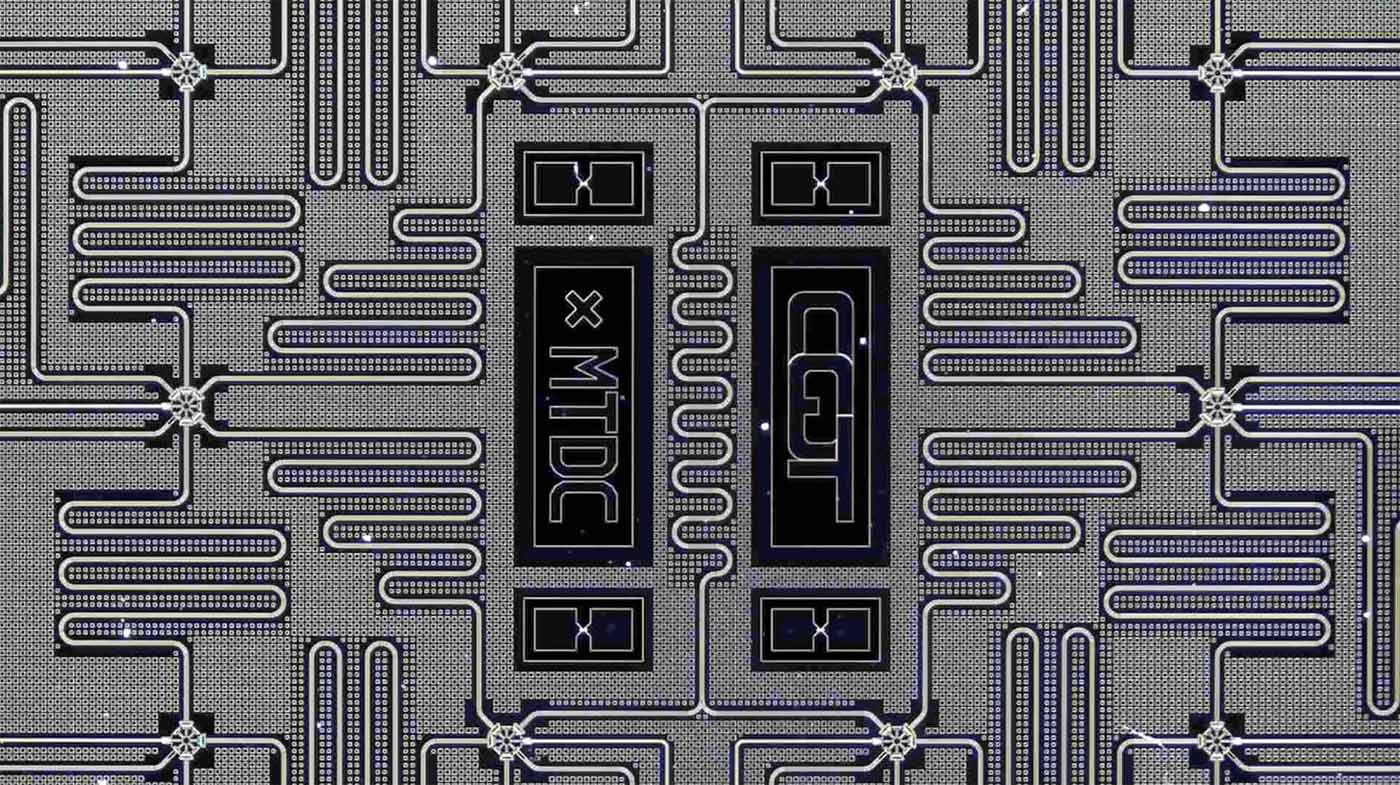 A close-up of the team’s ten-qubit chip. The ten qubits are structures inside the circular shapes. The CQT researchers collaborated with the Microsystem Technologies Development Centre (MTDC) at NTU to make this.
A close-up of the team’s ten-qubit chip. The ten qubits are structures inside the circular shapes. The CQT researchers collaborated with the Microsystem Technologies Development Centre (MTDC) at NTU to make this.
What are the advantages of moving from 3D technology to 2D?
Transiting between technologies, we have to redesign the electronic control. But we will have more flexibility in terms of qubit control. Using 3D cavities, we are limited in terms of how we control and make the qubits talk to each other. In a 2D structure, we have the freedom to send the drive line to separate qubits. So, for example, instead of controlling two qubits using one line, we can control two qubits using four lines.
What are the challenges?
The hard thing about the 2D structure is that, unlike in 3D where the qubits are quite isolated from the environment, it is an open structure where there is a lot of noise coming from the outside. We have to find better ways to shield it and isolate the crosstalk between all the lines in the circuit. Getting rid of the crosstalk, noise and other interference in our system are all still in progress.
Did your interest in quantum start during your undergraduate studies?
Actually, during my undergrad, I didn’t really have an idea of what quantum is. At that time, I was interested in optics in general because I was doing experiments in optics. During my FYP, I learnt about atomic physics and quantum phenomena and my interest started from there. My experience has been quite diverse because I started in optics, did my FYP in atomic physics, and now I’m working on superconducting quantum engineering.
Was it difficult to move between the different fields?
It was not that difficult because superconducting quantum circuits actually borrow a lot of experiments and theory from the atomic physics side. The hard part was that there was a huge jump in knowledge required when I started my PhD. I had to do a huge amount of studying. It took me a few years to get a grasp of what I am doing. It was a slow process. I was lucky because my professors taught me a lot. Along the way, there were challenges such as mentally, you feel like you are behind everyone else, and you feel inferior. But if you don’t mind it and keep persevering, it is a rewarding process.
You presented to Singapore’s Deputy Prime Minister when he visited CQT. How was the experience?
I think he liked the presentation. We showed him what we are doing in the labs rather than explaining the theory, and we practised a lot. I think now that I have a lot more experience working in the field, I have an idea on what I need to do and what is out there. When talking about it, I feel a lot more confident.
What are you enjoying about research so far?
During my PhD, I encountered problems for which I had no background knowledge. I had to start learning from scratch. When I got to know the problems better, I could make more refined designs for the experiment. Then, when our experiments work the way we want them to, or even better, that is one of the greatest joys I have doing research.
What do you enjoy outside of work?
When I arrived in Singapore, I got really into playing board games. It is always difficult to learn the rules of a game at first, and it’s tedious to teach the rules to other people, but when everyone gets it, it becomes very fun.
At some point, Hermanni, another PhD student who set up CQT’s graduate club, asked me to join the board game group at CQT, and I’ve been there ever since. With Covid, our board game sessions are now online but it is not the same. One of the joys of playing board games is the reactions of the people I play with.
Other than board games, I have also practised the yoyo for some time. I have a small yoyo collection and am able to do some yoyo tricks.
What are some of your favourite games?
I have two games which I really like: Everdell, and Arkham Horror: The Card Game. In Everdell, you control a small critter going around and you try to build your land. In Arkham Horror, you have to build a character and you play cards to fight monsters.
Learn more
Related Stories
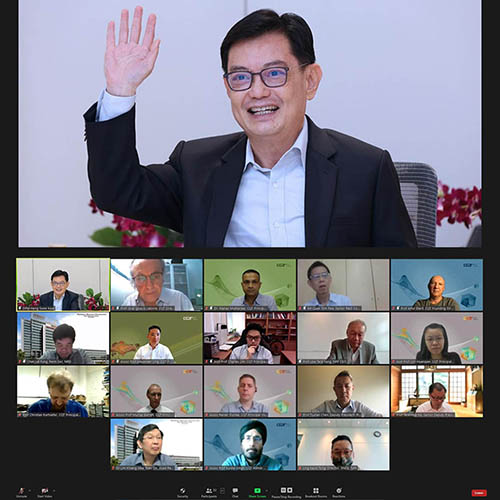 | Singapore’s Deputy Prime Minister Heng Swee Keat virtually visits CQT June 23 2021 |
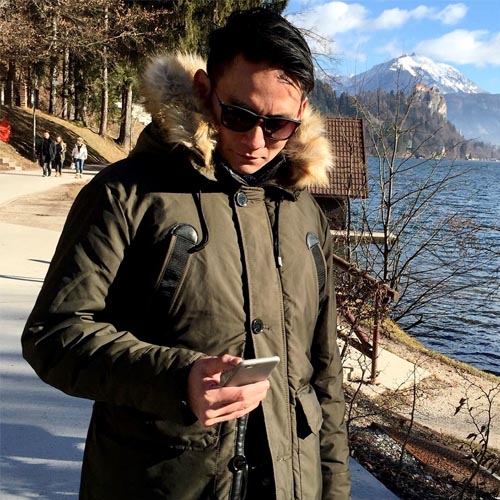 | Meet a CQTian: Mohammad Imran June 28 2021 |
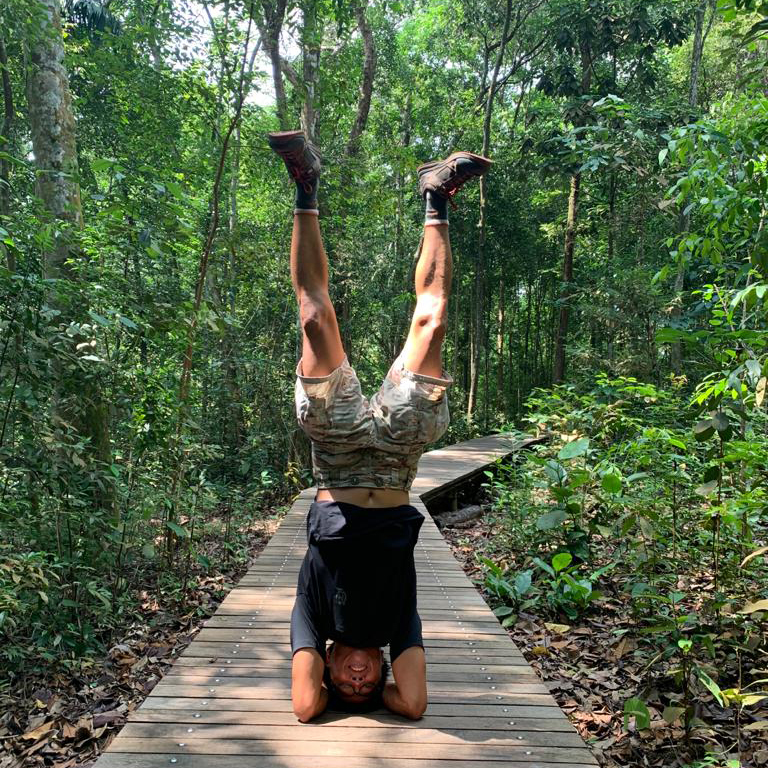 | Meet a CQTian: Joven Kwek July 26 2021 |
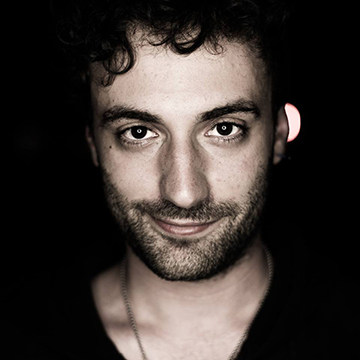 | Meet a CQTian: Alessandro Luongo June 09 2021 |






